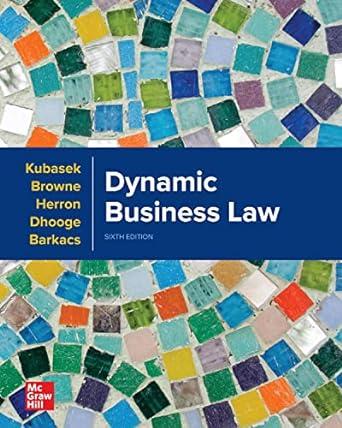Question
6. Ten marbles labeled 1,2,...,10 are placed in a big jar and then stirred up. Zori, wearing a blindfold, pulls them out of the jar
6. Ten marbles labeled 1,2,...,10 are placed in a big jar and then stirred up. Zori, wearing a blindfold, pulls them out of the jar two at a time. Players are allowed to place bets as to whether the sum of the two marbles in a pair is 11. There are C(10,2)=45 different pairs and exactly 5 of these pairs sums to eleven.
Suppose Zori draws out a pair; the results are observed; then she returns the two balls to the jar and all ten balls are stirred before the next sample is taken. Since the probability that the sum is an "11" is 5/45=1/9,, then it would be fair to pay one dollar to play the game if the payoff for an "11" is nine dollars. Similarly, the payoff for a wager of one hundred dollars should be nine hundred dollars.
Now consider an alternative way to play the game. Now Zori draws out a pair; the results are observed; and the marbles are set aside. Next, she draws another pair from the remaining eight marbles, followed by a pair selected from the remaining six, etc. Finally, the fifth pair is just the pair that remains after the fourth pair has been selected. Now players may be free to wager on the outcome of any or all or just some of the five rounds. Explain why either everyone should or no one should wager on the fifth round. Accordingly, the last round is skipped and all marbles are returned to the jar and we start over again.
Also explain why an observant player can make lots of money with a payout ratio of nine to one. Now for a more challenging problem, what is the minimum payout ratio above which a player has a winning strategy?
Step by Step Solution
There are 3 Steps involved in it
Step: 1

Get Instant Access to Expert-Tailored Solutions
See step-by-step solutions with expert insights and AI powered tools for academic success
Step: 2

Step: 3

Ace Your Homework with AI
Get the answers you need in no time with our AI-driven, step-by-step assistance
Get Started


